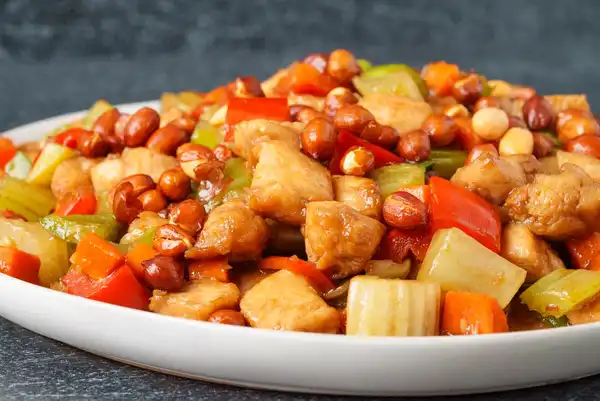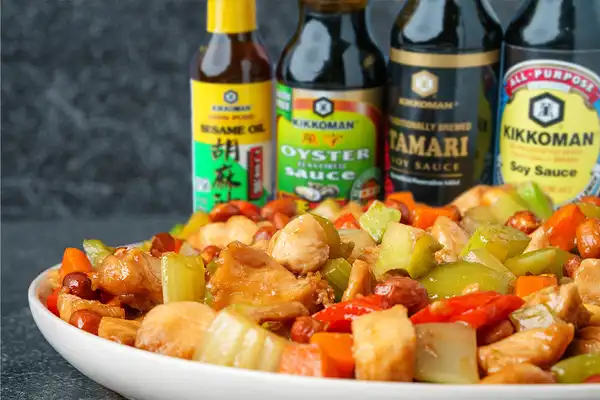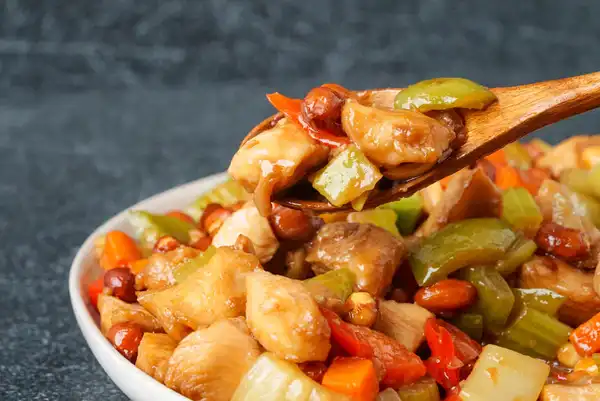Where is Kung Pao Chicken from?
We'll avoid answering the question by saying, it comes from many places! A spicier version with characteristic Sichuan peppercorns originates from the Sichuan region, of course. Southeast of Sichuan, mountainous Guizhou makes it with ciba chili paste and no peanuts.
And our sweeter, milder version is the product of the Cantonese immigrant legacy, when Chinese Americans adapted Chinese dishes to work with American produce and tastebuds.
Which one is authentic?
Every one of these versions is authentic, with its own history, sentimentality, and reason for being.
Thank you, Kikkoman!
This recipe is brought to you in part by Kikkoman. My dad has been using Kikkoman flavors throughout his 50-year career as a chef, and it's a privilege to get to partner with them on such an iconic recipe, Kung Pao Chicken!
- Kikkoman products are a major flavor enhancer and bring out the “umami” taste, and help balance and round out flavors
- Kikkoman® Less Sodium Soy Sauce is perfect for home cooks who are looking to cut down on their sodium levels, without sacrificing flavor
- Kikkoman offers a wide range of Gluten-Free Asian sauces, including Gluten-Free Oyster Sauce and Gluten-Free Hoisin Sauce
- The KikkomanUSA.com Chinese site offers easy Asian recipes that home cooks can enjoy any night of the week
You can learn more about Kikkoman and follow them on social media here:
- Website: https://www.KikkomanUSA.com
- Facebook: https://www.facebook.com/KikkomanChineseUSA (Kikkoman 萬字在美)
- Instagram: https://www.instagram.com/kikkomanusa_chinese/ (Kikkoman 萬字在美)
Check out a quick story summary of our recipe!



